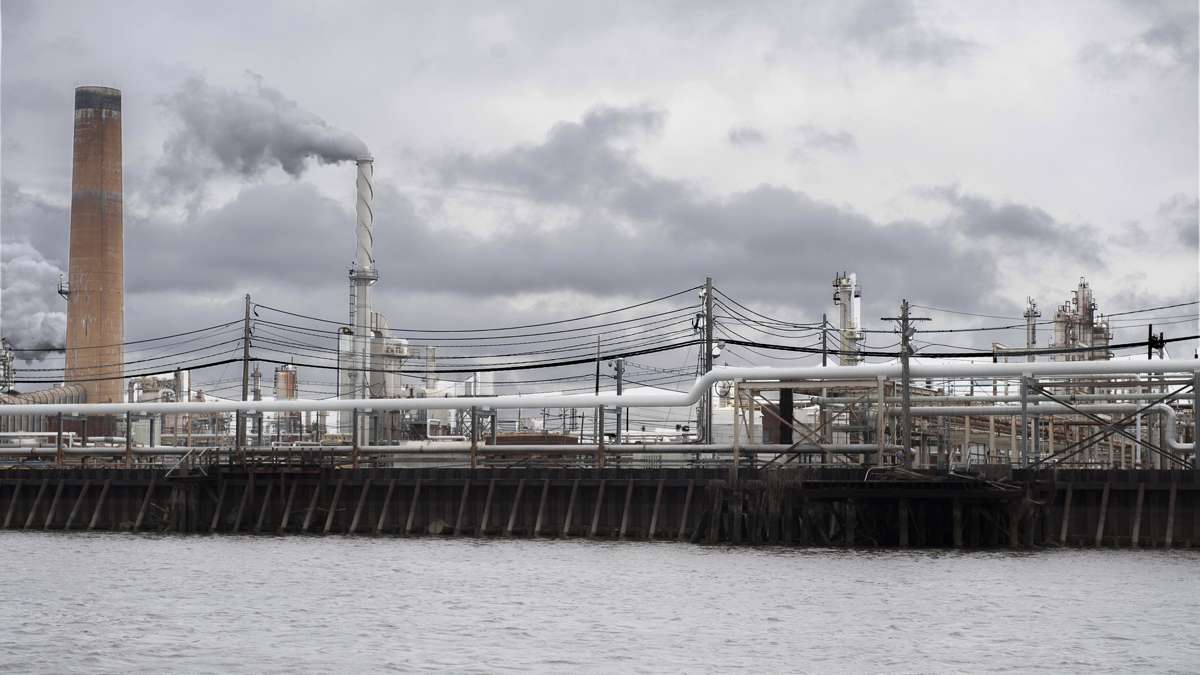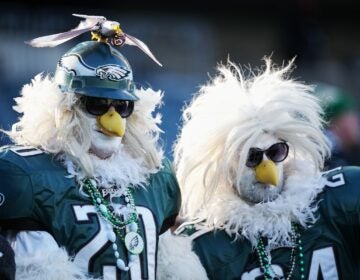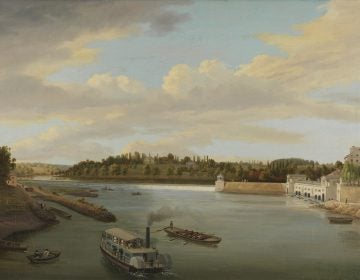Art and data marry to illuminate stories of life on the Schuylkill River
President Trump is committed to eliminating the Waters of the U.S. Rule, which outlines federally protected waterways. Critics of the rule say it hampers development and hurts farmers. Environmentalists say the rule is necessary to protect ecosystems and drinking water. How can the Trump Administration change water rules already in place, and what will happen to Obama Administration proposals? WHYY is hosting a public discussion, “Trump and Our Water Systems: A StateImpact Discussion,” on March 6, about these and other questions. Patricia E. Kim is the lead curator at an art installation called “Date/um,” which will be on view that evening.
—
“Date/um: Ecological Temporalities of the Lower Schuylkill River” is an installation that features artworks and research projects developed by a group of academics, activists, artists, and communities in and along the Lower Schuylkill River (LSR). “Date/um” draws attention to the diversity of the LSR, which hosts a wildlife refuge; the Tinicum marshlands; America’s oldest botanical garden, Bartram’s Garden; and various communities and neighborhoods.
The Schuylkill River is thus not only the Delaware River’s largest tributary, but also subject to multiple histories, ecologies, and infrastructures. Through an eclectic array of projects and artworks, the installation’s contributors offer different kinds of data from and of the tidal, urban river, while also fostering a sensitivity to Philadelphia’s ecological vulnerabilities in times of man-made climate change.
Although geological forces have shaped the LSR’s watershed for millennia, relatively recent human activities have quickly transformed it. For example, the largest and oldest oil port and refinery complex on the Eastern Seaboard are situated on the LSR. They continue to grow with the investments made in hydraulic fracturing across the Delaware River Basin despite the environmental and health concerns it raises.
Nevertheless, little environmental monitoring of the LSR has been carried out, and little information has been collected from and about its watershed, limiting what we know about a landscape that many Philadelphians use, inhabit, and enjoy. To that end, “Date/um” asks: How does one know and archive a river? What kinds of data from a riverine landscape are or would be useful, and how do they become meaningful?
In the past year, the Penn Program in Environmental Humanities and its collaborators have created, collected, and analyzed data with the aim of illuminating the LSR’s histories, ecologies, and inhabitants. Different kinds of data that measure, record, and represent the river and its watershed have emerged from the featured projects of “Date/um,” many of which are part of the Lower Schuylkill River Corps, a consortium of Philadelphia-based researchers and artists who work along the LSR. In some cases, the installation’s contributors have collected the kinds of data about the LSR that they wished they had and did not exist before their interventions. These environmental data include oral histories and sound recordings of water pollutants, in addition to photographic documentation and air quality measurements. By including various kinds of riverine data, “Date/um” communicates the value of scientific data and research from and along the LSR for many communities and species, and furthermore advocates for the continued collection and access to environmental data.
Peter DeCarlo’s “Streaming Velocities” (2016-) is a series of time-lapse videos that offer a new experience of witnessing an obscured watery landscape to contextualize his research studying air quality. Set up at various points along the LSR, the cameras capture the river, refinery, and tides, as well as the human and non-human animals that call the watery environs home.
Other projects demonstrate how deep listening offers rich and nuanced information about the LSR. “The Eastwick Oral History Project” (2016-) documents the experiences and memories, both personal and collective, of different Eastwick residents who share their life stories and trace the environmental history of their community neighboring the LSR. Danielle Toronyi’s sound installation, “Peak Discharge” (2016-), translates water quality and pollution data from the U.S. Geological Survey into sound bytes through underwater recordings of the Schuylkill to offer a multi-sensory illustration of the impact of human development on our natural systems.
By gathering heterogeneous forms, media, and data into a single riverine archive, “Date/um” participates in open-ended conversations with multiple publics, so that they are able to envision and experience the LSR anew. And in doing so, the contributors to “Date/um” imagine the possible futures of the LSR and its watershed. “Date/um” advocates for engaged education, collaborative research, and legible and creative communication of why data and knowledge-making are critical for the various communities that inhabit the LSR and its watershed, as well as people who live in Philadelphia.
In this spirit of distribution and collaboration, “Date/um” is meant to be mobile. We intend for “Date/um” to be downloaded, transferred, accessed, and displayed to diverse publics. Thus, the majority of the installation is digital so that it can be easily and cost-effectively exhibited and viewed in various kinds of contexts.
Please let us know if you would like to install it.
—
Patricia E. Kim, lead curator of Date/um, is a Ph.D. candidate at the University of Pennsylvania.
WHYY is your source for fact-based, in-depth journalism and information. As a nonprofit organization, we rely on financial support from readers like you. Please give today.








